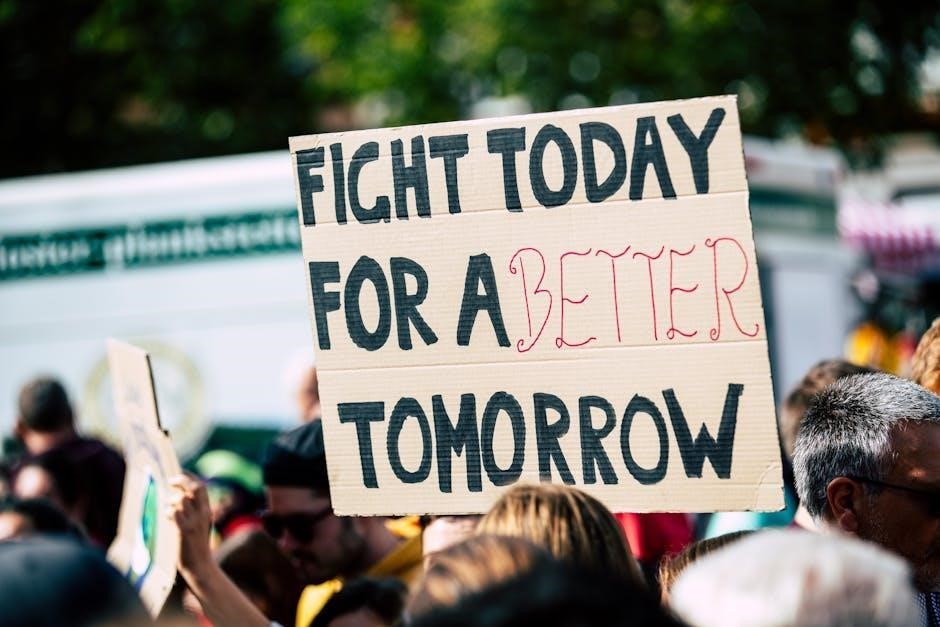
Readiness to Change Questionnaire: An Overview
The Readiness to Change Questionnaire (RCQ) is a tool used to assess an individual’s or organization’s preparedness for change. It typically utilizes a 12-item questionnaire based on established change models.
Definition and Purpose of Readiness to Change Questionnaires
A Readiness to Change Questionnaire is a structured assessment tool designed to evaluate an individual’s or group’s willingness and preparedness to adopt a new behavior, process, or system. Rooted in models like the Transtheoretical Model (Stages of Change), these questionnaires aim to pinpoint the specific stage a person or organization occupies in the change process, such as precontemplation, contemplation, or action.
The primary purpose is to gauge the level of motivation, confidence, and commitment towards making a change. This understanding enables tailored interventions and strategies to facilitate successful transitions. For example, individuals in the precontemplation stage might require awareness-building initiatives, while those in the action stage could benefit from support and reinforcement mechanisms. By identifying readiness levels, resources can be allocated effectively, and resistance can be addressed proactively, ultimately increasing the likelihood of successful and sustainable change implementation.
The Transtheoretical Model (Stages of Change)
The Transtheoretical Model describes distinct stages individuals progress through when changing behavior. Readiness to Change Questionnaires often utilize this model to assess an individual’s current stage.
Precontemplation Stage
In the Precontemplation stage, individuals are typically unaware of, or deny having, a problem. They show no intention to change their behavior in the foreseeable future, often defined as within the next six months. People in this stage may be resistant to recognizing the need for change and might defend their current behaviors. They might lack information about the consequences of their actions or feel demoralized about their ability to change.
Readiness to Change Questionnaires assess this stage by including questions that gauge awareness of the problem and intention to change. A low score on precontemplation items suggests a lack of readiness.
Contemplation Stage
The Contemplation stage is characterized by individuals acknowledging they have a problem and seriously considering overcoming it. They intend to change within the next six months but haven’t yet committed to taking action. People in this stage often experience ambivalence, weighing the pros and cons of changing their behavior. They may be actively gathering information and evaluating their options.
Readiness to Change Questionnaires assess the contemplation stage by including questions that explore the individual’s ambivalence and the perceived importance of change. Individuals in this stage might express a desire for self-improvement but remain unsure about their ability to succeed. Scores reflect that they are thinking about changing.
Action Stage
The Action stage is where individuals actively modify their behavior, experiences, or environment to overcome their problems. This stage involves clear efforts to change and requires considerable commitment of time and energy. Individuals in the action stage are actively implementing strategies and making observable changes. Questionnaires assess this stage by evaluating the extent to which individuals are currently taking steps toward change.
Readiness to Change Questionnaires measure the action stage by asking about current behaviors and strategies. High scores in this stage indicate that the person is actively working to change their behavior. They are implementing new self-management skills and addressing their issues head-on.

Components of a Readiness to Change Questionnaire
A typical Readiness to Change Questionnaire includes several key components designed to assess an individual’s stage of change. These questionnaires often incorporate Likert scales to measure agreement with statements related to precontemplation, contemplation, and action stages. Questions are designed to evaluate awareness of the problem, intention to change, and current change-related behaviors.
The questionnaire measures importance and confidence, gauging how important the change is to the individual and how confident they are in their ability to make the change. It also considers past attempts to change, perceived risks, and potential barriers. Some questionnaires may include open-ended questions to gather qualitative data on attitudes and perceptions.

Applications of Readiness to Change Questionnaires
Readiness to Change Questionnaires are used to assess preparedness for change. They are applied in organizations undergoing change and to evaluate readiness for behavioral changes in individuals, like excessive alcohol consumption.
Assessing Readiness for Organizational Change
Assessing readiness for organizational change is crucial for successful implementation. Change management pulse surveys can collect feedback on employee attitudes regarding organizational shifts. These surveys allow management to gauge readiness and identify areas needing attention, addressing concerns and resistance early on. A change readiness survey evaluates how prepared the organization is to navigate the upcoming changes and how well the change is managed during implementation.
These surveys help understand the impact of the change, identify potential roadblocks, and gather insights for adjustments to the change strategy. By asking targeted questions, organizations can proactively address employee concerns, foster a more positive attitude towards change, and increase the likelihood of a smooth and successful transition.
Evaluating Readiness for Behavioral Change in Individuals
Evaluating an individual’s readiness for behavioral change involves assessing their current stage in the change process. Tools like the Readiness for Change Questionnaire measure an individual’s commitment and potential barriers to change. This assessment is often combined with open-ended questions and motivational interviewing techniques to gain a deeper understanding of their perspective. Understanding where a client stands regarding specific behavior is crucial, as readiness may vary.
For example, an individual might be ready to start exercising but not yet prepared to quit smoking. Assessing readiness helps tailor interventions and support strategies, focusing on individual needs. Considering factors like importance and confidence in making the change is key to promoting successful behavioral shifts.

Examples of Change Management Survey Questions
Change management surveys collect feedback on employee attitudes and perceptions regarding organizational changes. These questions are designed to assess the readiness for change and spot areas that need attention. Example questions include: “How does your team talk about this new project or change amongst themselves?” and, “Is the talk positive, or is there resentment and apprehension?”
These surveys help evaluate how prepared the organization is to navigate change and determine how well change is being managed so that adjustments can be made as needed. Questions can cover various aspects, such as desire, ability, and confidence related to the change, revealing potential resistance or concerns.

How to Create a Readiness to Change Assessment
To create a readiness to change assessment, use structured tools like the Readiness for Change Questionnaire, which measures the current stage in the change process. Combine this with open-ended questions and motivational interviewing techniques to better understand commitment and potential barriers. Start by identifying the specific behaviors or changes you want to assess.
Incorporate questions that address importance, confidence, and readiness levels related to the change. You can also use ready-to-use scales and questions in online tools to create your own assessment. Ensure the assessment measures progress as people get ready for change, providing insights for adjustments to the change strategy.